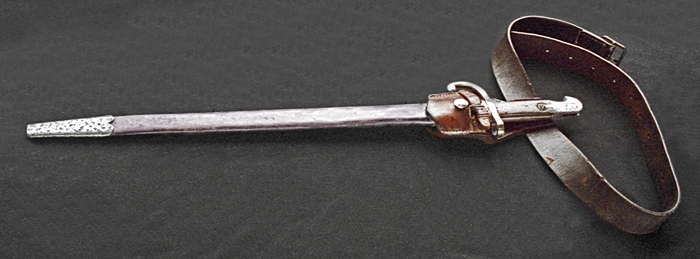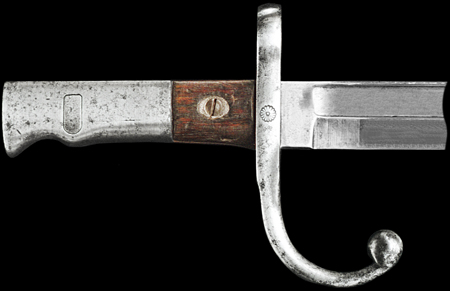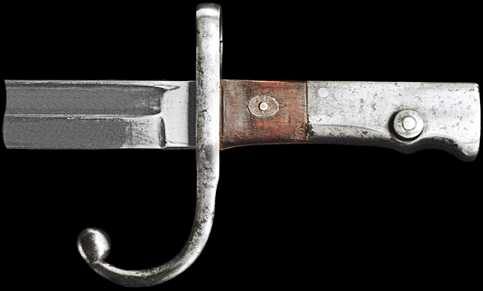銃剣(5)0
村 田 式 銃 剣
Murata Bayonet 1880-1897
明治十三年制定・村田十三年式銃剣
明治十三年に制定された十三年式村田銃(単発式)用銃剣。三十年式銃剣との大きな相
違点は剣身の形状にある。
剣先が諸刃の剣になっている。 (剣長:71.0㎝・刃長:57.0㎝・重ね:0.9㎝、彫溝長:35㎝、鍔厚:0.8㎝・鍔天地:10㎝)
Murata Type 13 bayonet 1880
The bayonet for the Murata Type
13 rifles (single shot type) enacted in
1880.
The big difference with a Type 30 bayonet is in the shape of a
blade. The tip part of the blade is a double-edged sword. (Sword
length: 69.5cm, Blade length: 56.5cm: Kasane: 0.9cm, Fuller length:
35cm).

彫溝先端の先から両刃剣になっている。三十年式に比べて刃長は16.5㎝長い。鞘は黒革製
It is a double-edged sword from before the tip of a fulleri. Compared
with theType 30 bayonet,
the blade length is long 16.5cm. Black leather scabbard.

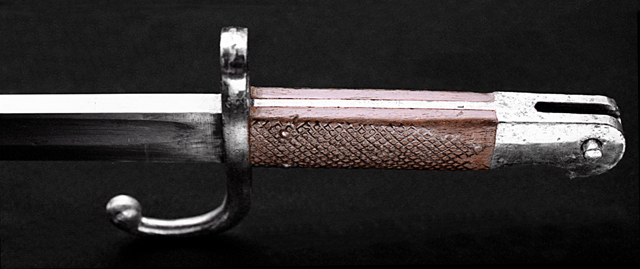
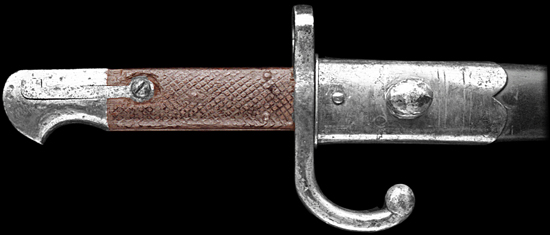
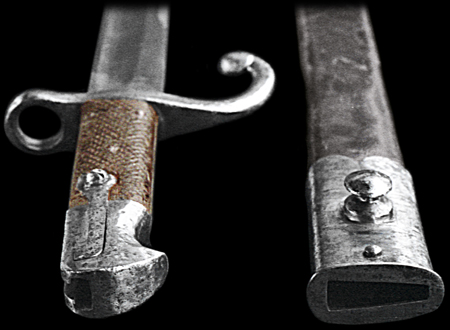

柄頭とシリアルナンバー
Tsuka-gashira and serial number
着 剣 方 法
The
bayonet equipping method
In Type 13 and Type 18 Murata rifle, it sees from the back of a
rifle,
and this bayonet is attached to the right-hand side side at the tip of
a rifle. Therefore, the blade becomes level. The bayonet is
attached
under a rifle after Type 22 Murata rifle.
着剣情報ご提供: 安原久悦
様(軍事教練で実体験)
写真提供: (Mr.Steve.J. Forner)
他の村田十三年式銃剣
Other Murata Type 13 bayonet

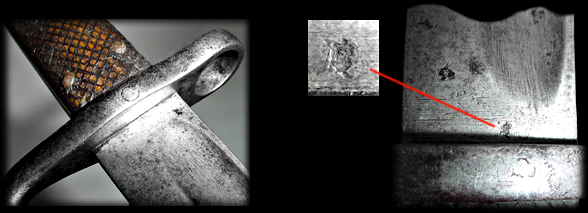
鍔側面中央に菊の紋章?刻印。識別困難。
剣身左側鍔元にある「渡」の刻印。検査官名と思われる
There is a crest stamp of a chrysanthemum in the center of the guard
side Discernment difficulty.
Blade left-hand side has a stamp of "Watari". This Kanji character is
presumed to be an inspector name.
写真提供: 施 純男(Shih Chun Nan)様 (在: 台灣省彰化市)

明治二十二年制定・村田二十二年式銃剣
明治二十二年に制定された村田連発銃用銃剣
後期型
(剣長:37.0㎝・刃長:28.0㎝)
Murata Type 22 Bayonet 1889
Murata Type 22 Bayonet for Type 22
Murata magazine rifles enacted in 1889.
Latter-term type:
(Sword length: 37.5cm, Blade length: 28.0cm).
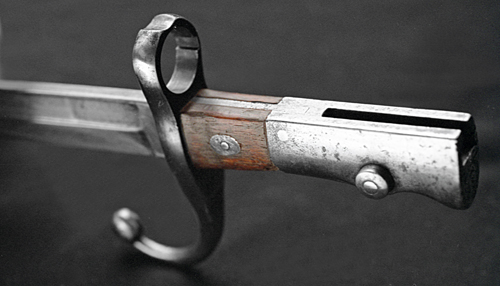
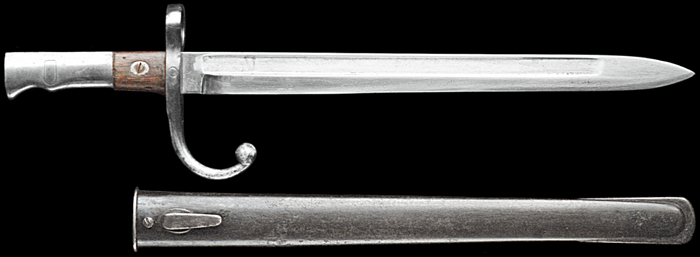


|
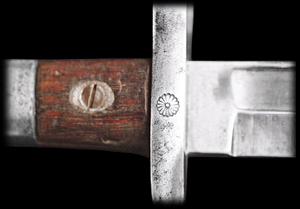
鍔の中央に菊の紋章
It is a crest of a chrysanthemum to the center of a guard. |

2013年11月24日より(旧サイトから移転)
ページのトップへ▲
